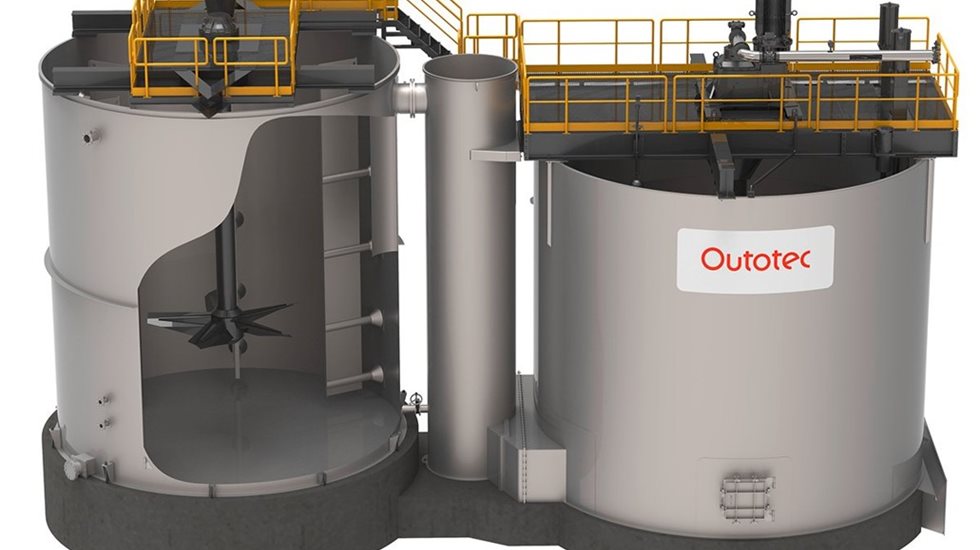What is a conditioning tank and what they do?
Conditioning tanks were traditionally added to the front of flotation circuits for reagent addition to the slurry prior to it entering the flotation cells. With their demise, people generally just add reagent to mills or in flotation cell feed boxes.
As conditioning tanks were common in plants in the past, I thought I’d look up Taggart to see what he had to say on the matter. I got the following three statements from chapter 12, which sum up their core role nicely.
“Activators and depressants should be introduced in time to permit required reactions to complete before aeration is started.”
“Necessity for conditioning becomes apparent quickly when it is considered that collection……involves selective chemical reaction between a minute amount of highly reactive collector and particular solid particles.”
“Control of this locale is one of the most important operations in the flotation process from the standpoint of economics”.
For some processes, having this time for reagents to react with slurry is super critical. For example, if there is insufficient conditioning time when using fatty acid collectors (e.g. silica floats), excessive collector usage is required to achieve the desired performance levels.
The primary way conditioners add value is by providing dedicated space where the chemistry of flotation can be controlled and optimized. I suspect from a practical standpoint if the instrumentation becomes robust enough this may be an exciting area for improving plant performance.
The second reason I like conditioning tanks is due to the fact that they are located ahead of float cells, so it is relatively easy to use a conditioning tank to control the density of the flotation circuit. Slurry density is a variable that is often neglected, and I’d argue it is important from both a circuit optimization point-of-view, and also a water reduction (cost and environmental footprint) aspect. This can be achieved in a conditioning tank with an automatic water addition valve in a feedback loop with a sensor installed on the tank (e.g. differential pressure sensor) or the tank discharge to measure pulp density.
Another function conditioning tanks serve is acting as a buffer in front of the first flotation cell of the bank. In visits to a number of modern sites I’ve seen problems with the first cell in the bank being extremely turbulent (sometimes to the point of not being able to support a stable froth). This was due to the feed slurry coming in with a high velocity to the feedbox. Effectively, this has removed the first flotation cell volume from the total active flotation volume. A better design for the transfer of the slurry to reduce this velocity would help, or similarly the inclusion of a de-energization box prior to the feedbox would likely improve the situation. Alternatively, you could add a conditioning tank to absorb any upstream disturbance.
Why did they go?
Despite the important role that these vessels play, they seem to have disappeared from many flowsheets in the last 30 years. In some processes they still are stalwarts, such as sphalerite flotation, but they are not as common as they once were in many other applications. I suspect the major drive for this was cost savings with engineers and end users trying to build plants for less.
Another likely driver for their demise was that there was a period where rather than being a supplied item (e.g. made for purpose by manufacturers such as the Denver Equipment Company) people started building a cheap tank and adding off the shelf mixers. I’ve seen numerous cases where these ‘homemade’ conditioner tanks have failed due to an under-sized mixer and poor tank design. This leads to sanding and the whole circuit needing to be shut down and drained so the conditioning tank could be shoveled out. An experience like this for a plant operator tends to create a strong dislike for the equipment which may see them omitted from future designs. The real lesson should have been to not skimp on buying a fit-for-purpose unit designed by professionals.
Do I need conditioning time?
Every ore is different; the only way to understand if you need conditioning time is to understand your ore and the chemistry of the slurry. When making this determination I’d suggest having a look at the lab flotation tests used to design your plant. Most lab tests I’ve seen done for plant design have conditioning time. Sure, sometimes this is just a period without air where reagents can be added and mixed, but quiet often these times are significant in the context of the float. In theory it is easy to test to see if conditioning time has an impact on performance. I wonder how many times has conditioning time from the lab tests has been discounted and the conditioning tank omitted? I’m not sure what the answer is but I think it is something every design engineer should be conscious of.
Conclusions
A conditioning tank adds capital cost to the flotation circuit, but it has potential to improve circuit control, reduce operating costs and even enhance process performance. Due to the potential upside, I think it is worth closely evaluating the installation of a flotation conditioning tank in any new circuit. Who knows, it may be time for a comeback for the conditioning tank......
About the writer
Ben Murphy has been involved in the mining industry for the majority of his working life and has experienced the industry from two very different perspectives. Firstly, working in base metal concentrators around the world in technical and managerial roles. More recently he has worked for mineral processing equipment suppliers, and currently works as Service Sales Director at Outotec.
